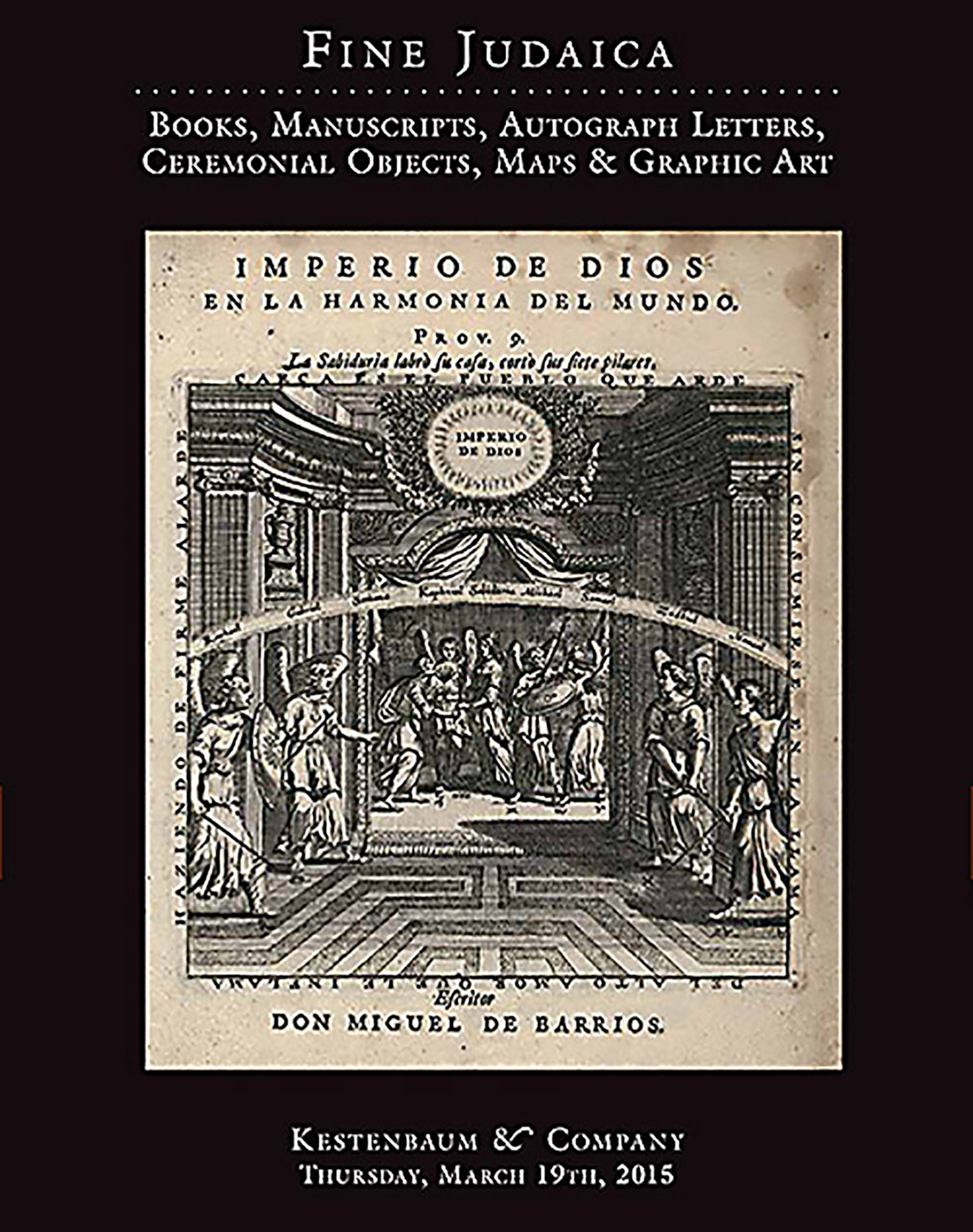[Map of the Holy Land]. Woodcut map, with place names over-printed in metal letter-press type. French text on verso.

AUCTION 64 |
Thursday, March 19th,
2015 at 1:00
Fine Judaica: Books, Manuscripts, Autograph Letters, Ceremonial Objects, Maps and Graphic Art
Lot 257
(BURCHARDUS DE MONTE SION - LUCAS BRANDIS DE SCHASS).
[Map of the Holy Land]. Woodcut map, with place names over-printed in metal letter-press type. French text on verso.
Lyons, 1491:
Est: $12,000 - $18,000
PRICE REALIZED $12,000
<<An extraordinary map from the dawn of Holy Land cartography.>>
“This map bears no relation to the maps of Palestine as published in the early Ptolemy editions and therefore remains unique as a cartographical representation of the Holy Land in the 15th century” (Laor 128).
Derived from a similar map of the Holy Land produced by Lucas Brandis de Schass as found in his world history “Rudimentum novitiorum,” Lubeck, 1475. It in turn was based on an earlier map by Burchardus de Monte Sion, the 13th-century Dominican priest from Magdeburg. Burchardus traveled extensively through the Holy Land and Near East from 1274-84 and his account and map of the pilgrimage (Prologus) were widely known.
The map here is a bird’s-eye-view, oriented to the east and symbolically depicts Jerusalem at center, encircled by a series of walls. Eight anthropomorphic personifications of the celestial directions surround a network of linked, stylized mountains and hills and feature Biblical scenes such as: Mount Sinai where Moses encounters the Burning Bush and receives the Tablets (upper right); Pharoah and the drowning Egyptian soldiers (lower right); and the crucifixion of Jesus (lower center). Curiosities also appear including the depiction of a continuous body of water surrounding the Holy Land and many silhouette figures that appear throughout the map, likely symbolizing pilgrims much like Burchardus himself.
From: La Mer des Hystoires, printed by Jean du Pre, 1491, pp. 309-10 (Goff R347).
“The map by Brandis de Schass bears very little resemblance to previous treatments of this subject and therefore remains a singular document, an extraordinary relic in the cartographic history of the Holy Land. One of the deepest implications of the notion of “holy place” in mythology and theology is that it is the center of the world. The axis mundi, that pivot through which, according to various beliefs, heaven and the underworld are connected, is the center from which the universe evolved. According to Jewish tradition, this axis passes through Jerusalem, where the Foundation Stone (on which the entire world rests) and the Holy of Holies are to be found, and where man was first created. The absolute holiness of Jerusalem and the Jewish and Christian notion that it is the “navel of the world” is thus also expressed in the art of cartography.” (www.arcv.org).
